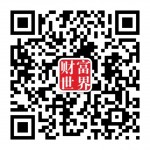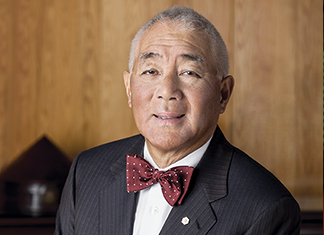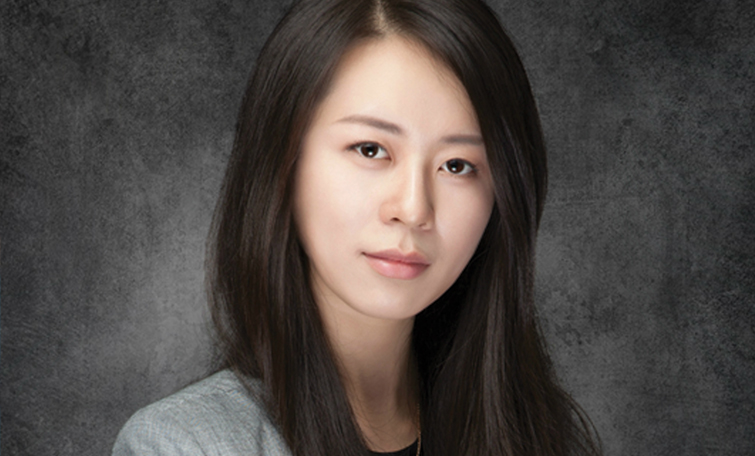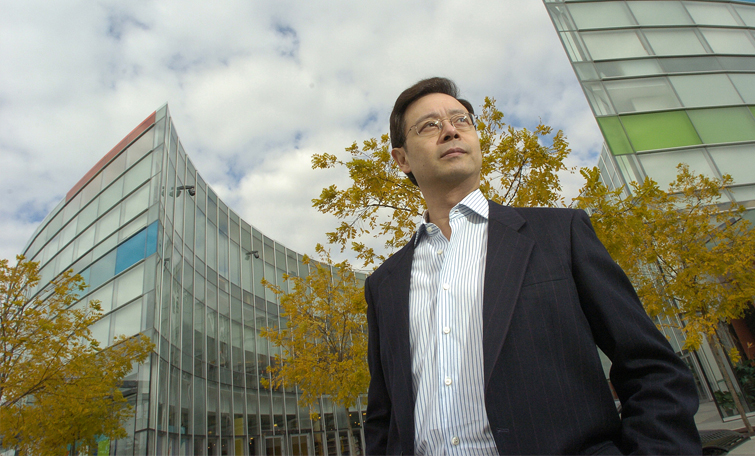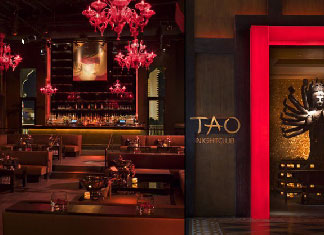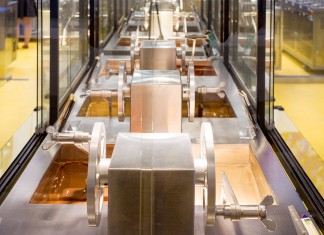BC Tourism Overview
- Caifu Magazine | by Caifu Global
- EN
By: Catherine Skrzypinski
When approaching Vancouver International Airport, a Chinese jetsetter gazes out the airplane window at the vast, blue-hued North Vancouver mountain range, the sparkling waters of English Bay, Strait of Georgia and the Pacific Ocean, and the futuristic architecture of Vancouver’s urban skyline. The province of British Columbia is rolling out the red carpet for China’s most affluent travellers.
According to Statistics Canada and Destination British Columbia Research, Planning and Evaluation, around 454,000 Chinese tourists visited Canada in 2014. In fact, Canada has welcomed more visitors from China than from any other country last year, surpassing the United Kingdom for the first time. Approximately 256,300 of these travellers entered Canada directly through British Columbia. The Canadian Tourism Commission reported B.C. is the preferred destination among Chinese pondering a Canadian vacation, slightly ahead of Ontario.
“British Columbia is one of the top tourism destinations in the world,” Naomi Yamamoto, minister of state for tourism and small business for British Columbia said in a news release. “Our tourism sector is an important economic driver and a key contributor to the prosperity of B.C. communities.”
Travel and tourism to B.C. has rebounded well since the global economic downturn of 2008, tourism leaders say. Chinese who travel for leisure to Canada has tripled since 2009, according to Destination British Columbia because of China’s economic growth, an expanding middle class, and lessening travel restrictions from the Mainland. An agreement between Canada and China in January 2014 has allowed 10-year multiple-entry visas to Chinese citizens to visit Canada for business, tourism or family purposes.
“This is welcome news given the challenging years our industry has faced,” Ian Robertson, CEO of the Tourism Industry Association of British Columbia, said in a statement. “The revitalization of B.C.’s destination brand will go a long way in reinforcing British Columbia as a world-class tourism destination.”
Luxury Adventures
The most popular activities for vacationing Chinese in British Columbia include sightseeing – which has increased 8 percent from 84 percent in 2009 to 92 percent in 2012 – and shopping, which remains at 84 percent as of 2012, Destination B.C. statistics indicate. The average Chinese tourist group spent CAD $2,555 – including accommodation, transportation, food, beverages, entertainment and recreation – during a visit to Canada in 2012.
While a majority of leisure travellers from China come to Canada to see family and friends, many are looking to spend some of their holidays outdoors. Outings to national or provincial parks have increased nearly 20 percent from 2009, Destination B.C. statistics stated. Many Chinese tourists express interest in viewing scenic beauty during their trip to B.C., as well as exploring nature and watching wildlife.
Destination British Columbia’s Manager of Market Development, Asia Monica Leeck told Caifu Magazine fully independent travel, or FIT, is the largest growing sector for a new generation of sophisticated and independent Chinese tourists. FITs are those who are over 35, earn an upper middle-class income, and prefer to travel in small groups, or as couples. They eschew mass tourism and holiday packages, and favor an individualistic approach to travel.
“British Columbia is perfectly situated geographically to attract luxury travellers from China,” Leeck explained. “B.C. is easily accessible by air from Asia, and its climate makes [the province] a year-round destination. The sky is the limit in B.C. for the Chinese visitor.”
Outdoor enthusiasts from China who want a glamorous alternative to camping can partake in “glamping.” No need to pitch a tent, unroll a sleeping bag or build a fire for s’mores – happy glampers can explore the great outdoors without sacrificing luxury in a tent, yurt or hut at Clayoquot Wilderness Resort, an exclusive eco-safari located near Tofino on Vancouver Island. Luxury en suite tents with private showers and flush toilets are available from May-October, ranging from CAD $6,050-CAD $12,705, depending on the time of season and length of stay.
Clayoquot Wilderness Resort is accessible by a scenic 45-minute private seaplane transfer from Vancouver, or a 30-minute boat ride from Tofino. “[Clayoquot] is luxury in the middle of nowhere,” Leeck said.
Guided adventure activities at Clyoquot Wilderness Resort include hiking, horseback riding, mountain biking, ocean and fresh water fishing, river and sea kayaking, rock climbing, surfing, tree platform climbing, and whale and bear watching, Those who want to pamper themselves at the Healing Grounds Spa can choose from body wraps, facials, massages and foot treatments. A Yoga fitness studio is also on the premises.
Other upscale resorts throughout B.C. focus on intimate experiences with nature, as the province’s coastal geography and proximity to the mountains offer dramatic contrasts, Leeck added. Those with means interested in delving more into Aboriginal culture can take a private helicopter tour offered by Klemtu, B.C.-based Spirit Bear Lodge on a five-day tour across the land of the Kitasoo/Xaix’ais First Nation people, flying over snow-capped peaks, majestic waterfalls and glacier-carved landscapes. They should also be on the lookout for the spirit bear – a rare sub-species of the black bear with white fur – indigenous to British Columbia’s rainforests. “Sightings of the spirit bear are rare, so it’s spiritual to see one,” Leeck added.
VIPs can charter helicopters to fly into the heart of glaciers in the Kootenay region of the B.C. Rocky Mountains. They can custom design their heli-hike into the Canadian wilderness to fit their lifestyle with Canadian Mountain Holidays. Those seeking to make a pilgrimage to B.C.’s renowned vineyards in Kelowna and the Okanagan Valley can book a helicopter with Sparkling Hill Resort. Daytrippers can explore several Okanagan wineries, indulge in VIP wine tastings and relish a gourmet farm-to-table meal al fresco – either in a picturesque vineyard or in an alpine setting. Prices start at CAD $2,530 per helicopter, and seats four.
Other vacation activities, such as visiting historic and cultural attractions, exploring museums and/or art galleries, dining at B.C.’s West Coast fusion-style restaurants, or gambling at casinos are becoming increasingly popular among Chinese visitors.
As aficionados of seafood, the Chinese love coming to B.C. because of its “the bounty of the sea,” Leeck said. Swallow Tail Tours offers foodies a chance to catch their own Dungeness crab for lunch. A chef demonstrates how to prepare crab, and how to cook it West Coast style without boiling. Afterward, gourmands will savor their catch in a fine-dining setting – either in the sunshine on the beach, or in a supper club. A private tour for a minimum of two guests costs CAD $149 per person, including the meal.
One festival that has captured Chinese tourists’ attention is the Adams River Sockeye Salmon Run in Kamloops, which occurs every October. Once a year, several species of salmon make their way upstream in B.C.’s rivers and streams to produce offspring. In October 2015, salmon enthusiasts can see more than 100,000 sockeye return to spawn. “The Chinese enjoy this, as they like to view the whole circle of life – the salmon return to the place of their birth to spawn and die,” Leeck said.
Business Travel
China is also moving toward global dominance of the business travel market. A study by the Global Business Travel Association forecasts business travellers from China will surpass the United States by 2016 or 2017.
Vancouver International Airport (YVR) President and CEO Craig Richmond said the airport is the key North American gateway to Asia. According to the Vancouver Airport Authority’s February 2015 Traffic Update, traffic to the Asia-Pacific region reached almost three million passengers in 2014, up 9.8 percent over 2013. Traffic to Mainland China is up 6.5 percent as of 2014, and aviation experts expect that will rise.
YVR has more than 70 weekly flights, and 48 direct flights to China– the most of any airport in North America. Airline carriers Air Canada, Air China, China Eastern Airlines, China Southern Airlines and Sichuan Airlines fly between YVR and several nonstop destinations in China – including Beijing, Chengdu, Guangzhou, Hong Kong SAR, Shanghai and Shenyang. A three-time weekly direct service between YVR and Kumming Changshui International Airport – one of China’s most livable cities with a pleasant climate – will start in June 2015.
Business travellers can fly between Vancouver and Guangzhou – Mainland China’s third largest city – in luxury on China Southern Airlines’ Boeing 787 Dreamliner as of February 2014. Four passengers can experience a first-class journey in comfortable cocoon seats that can convert into a flat bed. They can enjoy entertainment throughout the flight on a built-in 17-inch TV screen. The cost of a round trip first-class ticket is around CAD $13,200.
“…[China Southern’s] service connects British Columbia’s people, products and businesses with important trade and travel opportunities in China’s most populous province, Guangdong,” YVR CEO Richmond said in a news release.
Whether a Chinese frequent flyer is further exploring what B.C. has to offer, or heading back home to China, Vancouver International Airport passengers – regardless of airline or fare class – can enjoy a five-star experience at four lounges throughout YVR before takeoff.
A single visit to the Plaza Premium Lounge, which opened in YVR’s domestic departures near Gate B15 in March 2015, starts at CAD $40 per person for two hours. This fee includes use of its comfortable lounge facilities stocked with news magazines and international newspapers, a business centre with computer workstations, a place to charge up electronic devices, large-screen televisions, and high-speed complimentary Wi-Fi. Three private luxury shower rooms are available with full amenities.
The dining area offers an array of healthy food and beverages, including hot breakfast, soups and salads, juice, espresso, lattes, coffees and teas, and Canada’s most famous dish – poutine with confit meat. Guests will find a bar stocked with beer, wine and cocktails open after 11 a.m. For a separate cost, guests can unwind or take a nap in a semi-private resting area outfitted with comfortable recliners.
“Vancouver is a very important market for us, and this new lounge is the next step in our plan to grow the Plaza Premium lounge brand throughout North America,” Song Hoi-see, Plaza Premium Lounge Management Ltd. founder and CEO, said in a news release. “For 10 years travellers through YVR have embraced the comfort and convenience of having a lounge option.”
A globetrotter in YVR can also enjoy this VIP experience in a lounge designed by Hong Kong interior designer Kinney Chan of Kinney Chan and Associates (KCA). The luxurious lounge, located in International Departures in Pier D, can accommodate up to 180 guests.
Lounge guests can dine on international cuisine, such as Hong Kong-style fish ball noodle soup. A VIP room is available to rent for business meetings. Access to the VIP room, which requires at least six guests, costs CAD $50 per person for two hours.
The hospitality industry in British Columbia is also eager to cater to the elite Chinese business traveller. Hilton Hotels and Resorts started a Huanying (the Chinese word for “welcome”) experience for Chinese guests worldwide. More than 30 Hilton properties in 13 countries have participated in the program since its inception in August 2011, including the Hilton Vancouver Airport and the Hilton Vancouver Metrotown.
When a Chinese guest arrives at a Hilton property, the staff greets him or her with a welcome note in simplified Chinese. They can request a Mandarin-speaking Hilton team member for interpretation services.
In their posh hotel room, Hilton guests will find in-room slippers to wear, a tea kettle to boil Jasmine tea, and they can tune into several Mandarin-language TV channels. Guests have the option to start their day with a traditional Chinese breakfast of dim sum, fried dough fritters, or crullers, hard-boiled eggs, green tea and soy milk.
Chinese guests are big fans of the Starwood hotel brand, which includes high-end accommodations like Aloft, Four Points, Le Meridien, the Sheraton, the St. Regis, W Hotels and the Westin. The Starwood Personalized Travel program also makes its guests feel at home with a welcome packet in Mandarin of sightseeing and shopping recommendations and room service menus, as well as a translation service onsite. In the morning, comfort foods such as fried rice, fried noodles and congee are available.
“B.C. strives to be destination for all travellers,” Leeck concluded. “Whether you want to have breakfast with the belugas [at the Vancouver Aquarium] or dinner at one of Richmond’s many popular Chinese restaurants, it’s all here. You are limited by your imagination.”



